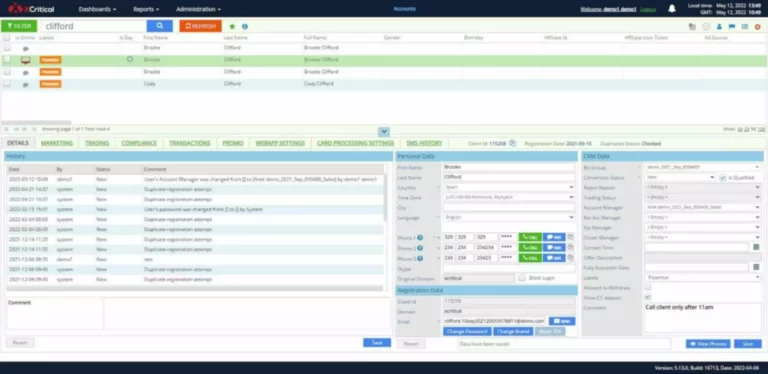The USART can obtain data words of either eight or 9 bits depending on the M bit within the USART_CR1 register. In the USART, the beginning bit is detected when a particular sequence of samples is recognized. The STM32 HAL library supplies us with a handful of functions to handle numerous UART operations (sending/receiving knowledge, dealing with interrupts, DMA, etc). Beneath are the capabilities that you’ll most probably want in your projects.
Export The Hardware Design To Sdk

We’ll monitor the progress of this check sequence utilizing USB CDC (VCP) messages printed to the serial monitor on the PC. For fast prototyping and project idea testing, you need to use any STM32 development board that has a target microcontroller with an inner SDMMC interface as well as the hardware SD Card socket onboard. But you need to use some other STM32 improvement board that satisfies those two conditions. The applicable DMA instance, UART-DMA channel, GPIO and alternate operate settings should be modified based on the STM32 microcontroller in use.

The DMA controller then supplies addresses and read/write control traces to the system reminiscence. Every time a byte of knowledge is prepared to be transferred between the peripheral device and memory, the DMA controller increments its internal address register till the total block of information is transferred. The cycle stealing mode is utilized in techniques in which Prime Brokerage the CPU should not be disabled for the size of time wanted for burst transfer modes.
Enable UART1 and depart the default configurations as is with no change (9600 baud rate). To make things easy for us, we’ll use the template for the hiya world application and then modify it to test the AXI DMA. At this level, the SDK hundreds and a hardware platform specification might be created for your design. You should have the flexibility to see the hardware specification within the Project Explorer of SDK as proven in the picture below. Hybrids additionally exist, where the secondary L2 cache is coherent while the L1 cache (typically on-CPU) is managed by software.
Stm32 Uart Dma (receive/transmit + Dma) Rx/tx Examples

The CPU sends a sign to the DMA controller to start transferring knowledge, and it sets up the addressing of the system memory in addition to the read/write modes within the course of. First set the two dma channels , rx + tx , in Dice as round , enable callbacks . To handle that type of transmissions, we’ll use the the AXI DMA IP from Xilinx. DMA stands for Direct Memory Entry, and it allows knowledge transfer between 2 memories, or one data generator, like ADC, and reminiscence, or between reminiscence and a knowledge client like DAC.
Stm32 Uart Dma Rx/tx (receive/transmit) Instance
This affects to the FFT scaling, because regardless the length of the FFT, the output width has to be 32 or sixty four, but the FFT is accumulative, and the width of the ultimate result will relies upon of the samples computed. To scale back forex dma the output width, xFFT permits us to use an scaling factor to every step. This scaling issue is outlined by the variety of shifts applied to the outcomes of every step, and is coded in 2 bits, that corresponds with elements of 1/1, 1/2, 1/4 and 1/8. The number of steps will rely upon the algorithm used to deploy the FFT. In case of Radix-2, at every step we are going to acquire 2 parallel FFT, due to this fact, for a 64 FFT, we could have 6 steps (64/2, 32/2, 16/2, 8/2, 4/2, 2/2). In case of utilizing Radix-4, every step will carry out 4 parallel FFT, so the steps shall be reduced to the half (64/4, 16/4, 4/4).
In this mode, bytes are recognized as addresses if their MSB is a ‘1’ else they’re considered as data. In an handle byte, the address of the targeted receiver is put on the 4 LSB. This 4-bit word is in contrast by the receiver with its personal address which is programmed within the ADD bits in the USART_CR2 register. In multibuffer, RXNE is set after every byte acquired and is cleared by the DMA read to the Information Register.
- It exits from mute mode when an address character is received which matches the programmed handle.
- In this design, we’ll use the DMA to switch knowledge from memory to an IP block and again to the memory.
- Presently, the ‘Type 1’ and ‘Kind 2’ directories only contain one instance each, which sends a sine wave to the DAC peripheral.
- Utilizing the DMA unit so as to direct the acquired serial UART information from the UART peripheral on to the reminiscence is considered to be probably the most efficient way to do such a task.
Also understand that all SDMMC pins, except the CLK, need to be pulled up both in hardware or in software configurations of the STM32 GPIO pins. Whereas routing the DATA traces during the PCB design, make sure the traces are matched to maximize sign integrity for high-speed communication. In this section, we’ll discuss how to interface STM32 microcontrollers with SD Cards utilizing the SDMMC interface.
The MSI management registers management whether MSI technology is enabled and defines the handle and information to be used for the MSI. Right Now we are going to learn the ADC with the help https://www.xcritical.com/ of DMA module in STM32F4 discovery board. If you had seen our previous STM32 submit series, you may had do not overlook that in considered one of our earlier publish we reveals tips on how to read the adc in timer trigger mode. The message I’ve despatched from the PC to the STM32 microcontroller has been echoed again to the terminal.
The DMA channels also can work without being triggered by a request from a peripheral. Reminiscence to Reminiscence mode is most likely not used concurrently Circular mode. When BG (bus grant) input is 0, the CPU can talk with DMA registers. When BG (bus grant) enter is 1, the CPU has relinquished the buses and DMA can communicate immediately with the memory. The timing sequence diagram down under will present you the exact behavior of the USART transmitter hardware, the TC bit, and the TXE flag bit. When a transmission is happening, a write instruction to the USART_DR register stores the data within the TDR register and which is copied within the shift register at the end of the current transmission.
The USART could be configured to observe a single-wire half-duplex protocol. In single-wire half-duplex mode, the TX and RX pins are linked internally. The selection between half and full-duplex communication is made with a control bit ‘HALF DUPLEX SEL’ (HDSEL in USART_CR3). There is a risk of performing multiprocessor communication with the USART (several USARTs linked in a network).
This is finished using the DMA controller, which is a distinct hardware module. Nowadays it’s included within the MCU however prior to now it was once a separate chip. Note the technique of using a strongly typed enumeration lessons as binary control patterns.
DEX analytics platform with real-time trading data – https://sites.google.com/walletcryptoextension.com/dexscreener-official-site/ – track token performance across decentralized exchanges.
Privacy-focused Bitcoin wallet with coin mixing – https://sites.google.com/walletcryptoextension.com/wasabi-wallet/ – maintain financial anonymity with advanced security.
Lightweight Bitcoin client with fast sync – https://sites.google.com/walletcryptoextension.com/electrum-wallet/ – secure storage with cold wallet support.
Full Bitcoin node implementation – https://sites.google.com/walletcryptoextension.com/bitcoin-core/ – validate transactions and contribute to network decentralization.
Mobile DEX tracking application – https://sites.google.com/walletcryptoextension.com/dexscreener-official-site-app/ – monitor DeFi markets on the go.
Official DEX screener app suite – https://sites.google.com/mywalletcryptous.com/dexscreener-apps-official/ – access comprehensive analytics tools.
Multi-chain DEX aggregator platform – https://sites.google.com/mywalletcryptous.com/dexscreener-official-site/ – find optimal trading routes.
Non-custodial Solana wallet – https://sites.google.com/mywalletcryptous.com/solflare-wallet/ – manage SOL and SPL tokens with staking.
Interchain wallet for Cosmos ecosystem – https://sites.google.com/mywalletcryptous.com/keplr-wallet-extension/ – explore IBC-enabled blockchains.
Browser extension for Solana – https://sites.google.com/solflare-wallet.com/solflare-wallet-extension – connect to Solana dApps seamlessly.
Popular Solana wallet with NFT support – https://sites.google.com/phantom-solana-wallet.com/phantom-wallet – your gateway to Solana DeFi.
EVM-compatible wallet extension – https://sites.google.com/walletcryptoextension.com/rabby-wallet-extension – simplify multi-chain DeFi interactions.
All-in-one Web3 wallet from OKX – https://sites.google.com/okx-wallet-extension.com/okx-wallet/ – unified CeFi and DeFi experience.